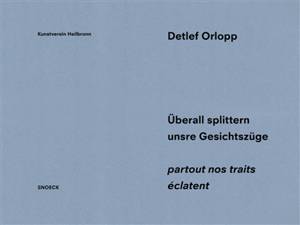
- Afhalen na 1 uur in een winkel met voorraad
- Gratis thuislevering in België vanaf € 30
- Ruim aanbod met 7 miljoen producten
- Afhalen na 1 uur in een winkel met voorraad
- Gratis thuislevering in België vanaf € 30
- Ruim aanbod met 7 miljoen producten
Zoeken
Detlef Orlopp: Partout Nos Traits Éclatent
Cat. Kunstverein Heilbronn
Daniel Kothenschulte
Paperback | Engels
€ 41,95
+ 83 punten
Omschrijving
Detlef Orlopp (*1937) began his apprenticeship as a photographer in 1955, and today, some seventy years later, he can look back on an impressive oeuvre. Until 1973, Detlef Orlopp held a professorship at the Werkkunstschule in Krefeld. In 2015, the Folkwang Museum in Essen acquired a significant part of his estate. Fully committed to analog black-and-white photography, the artist " paints" with light, structure, line and shading in the thematic field of landscapes and portraits. He selects for example sections of the earth's surface and conceals their representational origin, and reduces their expansiveness to the perspectival depth of the picture surface. The absence of any comparative scale leads to a pictorial reorganization that, in its degree of abstraction, results in a formal autonomy. Detlef Orlopp's landscape excerpts are timeless and spaceless abstractions that have been transformed into structural pictorial elements. As such, he positions himself in twentieth-century modernism. The tachism of Wols, the " all-over" structure of Jackson Pollock's drippings, and the gestural style of Hans Hartung. The booklet is the first to include works from his glacier series.
Specificaties
Betrokkenen
- Auteur(s):
- Uitgeverij:
Inhoud
- Aantal bladzijden:
- 48
- Taal:
- Engels
Eigenschappen
- Productcode (EAN):
- 9783864424342
- Verschijningsdatum:
- 20/01/2025
- Uitvoering:
- Paperback
- Formaat:
- Trade paperback (VS)
- Afmetingen:
- 324 mm x 241 mm
- Gewicht:
- 400 g

Alleen bij Standaard Boekhandel
+ 83 punten op je klantenkaart van Standaard Boekhandel
Beoordelingen
We publiceren alleen reviews die voldoen aan de voorwaarden voor reviews. Bekijk onze voorwaarden voor reviews.








